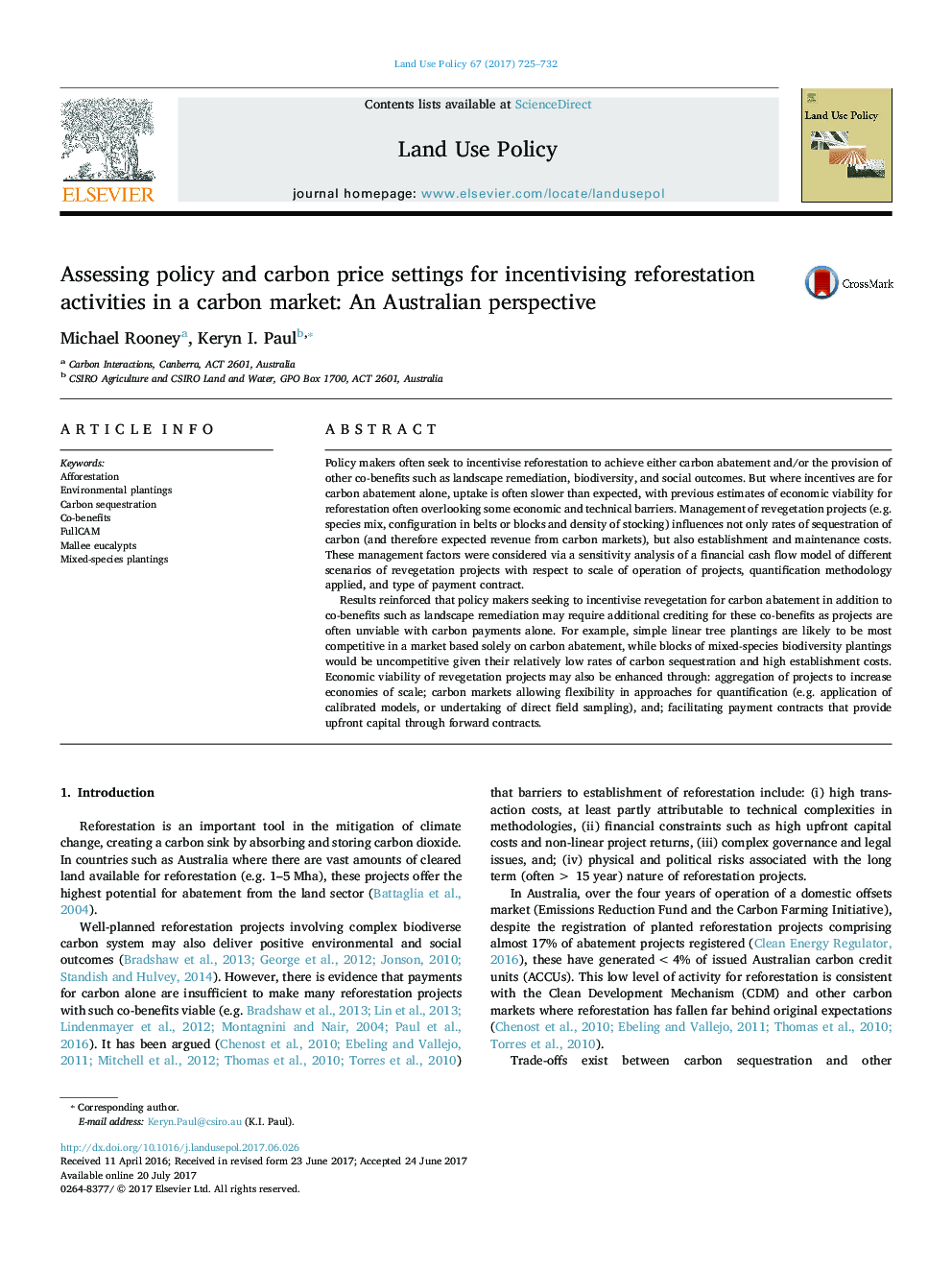| کد مقاله | کد نشریه | سال انتشار | مقاله انگلیسی | نسخه تمام متن |
|---|---|---|---|---|
| 6460778 | 1421816 | 2017 | 8 صفحه PDF | دانلود رایگان |
- Sensitivity analysis provides feasibility of carbon reforestation activities.
- Complex vegetation systems are not competitive with other carbon forestry options.
- Timing of both costs and revenue are important to understand feasibility.
- Small changes to growth rates may have large impacts on feasibility.
Policy makers often seek to incentivise reforestation to achieve either carbon abatement and/or the provision of other co-benefits such as landscape remediation, biodiversity, and social outcomes. But where incentives are for carbon abatement alone, uptake is often slower than expected, with previous estimates of economic viability for reforestation often overlooking some economic and technical barriers. Management of revegetation projects (e.g. species mix, configuration in belts or blocks and density of stocking) influences not only rates of sequestration of carbon (and therefore expected revenue from carbon markets), but also establishment and maintenance costs. These management factors were considered via a sensitivity analysis of a financial cash flow model of different scenarios of revegetation projects with respect to scale of operation of projects, quantification methodology applied, and type of payment contract.Results reinforced that policy makers seeking to incentivise revegetation for carbon abatement in addition to co-benefits such as landscape remediation may require additional crediting for these co-benefits as projects are often unviable with carbon payments alone. For example, simple linear tree plantings are likely to be most competitive in a market based solely on carbon abatement, while blocks of mixed-species biodiversity plantings would be uncompetitive given their relatively low rates of carbon sequestration and high establishment costs. Economic viability of revegetation projects may also be enhanced through: aggregation of projects to increase economies of scale; carbon markets allowing flexibility in approaches for quantification (e.g. application of calibrated models, or undertaking of direct field sampling), and; facilitating payment contracts that provide upfront capital through forward contracts.
Journal: Land Use Policy - Volume 67, September 2017, Pages 725-732
